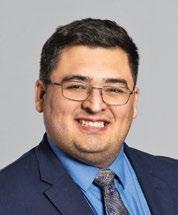




By Joy Stephenson-Laws, Managing Partner
For years, a troubling pattern has emerged in the healthcare industry: health insurance companies are increasingly resorting to complex tactics to deny, delay, or drastically underpay legitimate claims from hospitals and other healthcare providers. This is not a matter of isolated incidents or administrative hiccups. Rather, it is a systemic issue that undermines the financial stability of hospitals and places patient care at risk. Several major legal cases illustrate just how far some insurers will go
to avoid reimbursing healthcare institutions fairly— and the consequences these actions have for the broader healthcare ecosystem
St. Charles Surgical Hospital & Center for Restorative Breast Surgery vs. Blue Cross Blue Shield of Louisiana
In 2024, a Louisiana jury delivered a stunning $421 million verdict against Blue Cross Blue Shield of
Louisiana. The lawsuit was brought by St. Charles Surgical Hospital and the Center for Restorative Breast Surgery, who alleged that the insurer had systematically underpaid for more than 9,000 procedures over a ten-year span. What made the case especially egregious was the fact that these procedures had been pre-approved. Despite verifying coverage and issuing prior authorizations, Blue Cross Blue Shield failed to reimburse the hospitals adequately, instead opting for dramatically reduced payments that ignored customary or contractual
rates. The jury found these practices to be intentional and financially damaging to the providers.
TeamHealth, a national emergency physician staffing group, took UnitedHealthcare to court in Nevada and won a $60 million punitive damages award in 2021. At the heart of the case was a pattern of deliberate underpayment for emergency services provided by TeamHealth physicians. The jury found that UnitedHealthcare had consistently reimbursed emergency room doctors at rates far below fair market value, even when those services were essential and lifesaving. The court concluded that the insurer’s actions were part of a broader strategy to contain costs at the expense of provider fairness and patient access.
In another monumental legal development, Blue Cross Blue Shield agreed in 2024 to pay $2.8 billion to settle a sweeping antitrust class action. This lawsuit, filed by a class of hospitals, physicians, and other healthcare providers, accused Blue Cross and its affiliates of dividing the U.S. market into exclusive service areas. This “territorial fencing” suppressed competition and allowed the insurers to keep reimbursement rates artificially low while maintaining high premiums for consumers. As part of the settlement, Blue Cross agreed to significant operational reforms aimed at increasing transparency and accountability.
California
In a notable case, the Law Offices of Stephenson, Acquisto & Colman (SAC) represented The Regents of the University of California in a lawsuit against Kaiser Foundation Hospitals. The case centered on allegations of breach of contract and insurance bad faith, with Kaiser accused of failing to honor reimbursement obligations for medical services provided by the University of California’s healthcare facilities. SAC’s legal team, including attorneys David Mastan, Joy Stephenson-Laws, Barry Sullivan, and Rich Lovich, successfully litigated the case, resulting in a significant jury verdict. This outcome was recognized by Top Verdict as one of the top 50 highest jury verdicts, settlements, court, or arbitration awards in California for the year 2017.
The consequences of these practices go far beyond courtrooms and balance sheets. For hospitals, delayed or denied payments create immense cash flow issues. These financial strains may force providers to delay facility improvements, reduce staff, or even close departments. Rural and community hospitals, in particular, are vulnerable; for them, a few million dollars in unpaid claims can mean the difference between survival and closure.
For patients, the effects are even more insidious. When hospitals are not paid promptly or fairly, they often pass the burden onto patients in the form of higher out-of-pocket costs or aggressive collection efforts. Additionally, if a hospital becomes financially unstable due to insurer non-payment, patients may face reduced access to services, longer wait times, or the need to travel far distances to receive necessary care.
Moreover, the erosion of trust between providers and payers filters down to patient-provider relationships. Patients are frequently caught in the middle of disputes, receiving conflicting information from insurers and hospitals and left unsure about what services are covered and what they owe. This confusion can deter people from seeking needed care altogether, leading to worse health outcomes.
Historically, many hospitals adopted a passive approach to insurance claim denials, often writing off unpaid claims as bad debt. This practice was partly due to the high costs and complexities associated with legal action. However, the current landscape of systematic underpayment and denial by insurers has necessitated a more proactive stance. Legal advocacy has become an essential tool for healthcare providers to ensure fair reimbursement. By pursuing litigation against insurers who engage in bad faith practices, hospitals not only recover owed funds but also set legal precedents that can deter future misconduct. The success of firms like Stephenson, Acquisto & Colman in representing healthcare providers demonstrates the effectiveness of legal action in holding insurers accountable. Furthermore, legal victories can lead to broader industry reforms, such as increased transparency in insurer practices and the establishment of more equitable reimbursement standards. These outcomes benefit not only the litigating institutions but the healthcare system as a whole.
These high-profile cases demonstrate the urgent need for systemic reform in healthcare reimbursement. While litigation can help to enforce accountability, more proactive and widespread changes are essential.
1 Strengthen Regulatory Oversight: Federal and state regulators must impose stricter standards and penalties on insurers that engage in chronic underpayment or denial of claims. Policies that enforce “prompt pay” laws should be uniformly adopted and rigorously monitored.
2 Enforce Transparent, Fair Contracts: Contracts between hospitals and insurers should clearly define payment rates, authorization procedures, and dispute resolution processes. Hospitals must be empowered to hold insurers accountable to these terms.
3 Expand Independent Arbitration: Disputes over reimbursement could be resolved through fast-track, neutral arbitration rather than costly litigation. Several states have adopted such models with success, reducing court burdens and enabling quicker resolutions.
4 Increase Public Accountability: Insurers should be routinely required to report their claims denial rates, average time to payment, and results of internal appeals processes. Public reporting would incentivize better behavior and give providers and patients insight into payer reliability.
5 Support Legal Advocacy: Law firms specializing in healthcare law play a critical role in defending hospitals from unjust payer practices. Their litigation successes have helped to set important legal precedents and have brought attention to insurers’ misconduct.
The problem is clear: when insurers fail to pay for care that is authorized and provided, the entire system suffers. Patients are left in financial limbo. Hospitals are forced into impossible economic choices. And the trust that is foundational to effective healthcare is eroded.
Policymakers, provider networks, and insurance regulators must prioritize these issues now. It is time to rebalance the scales so that the burden of rising healthcare costs is not unfairly borne by those delivering or receiving care. Fair and timely reimbursement isn’t just a financial issue— it’s a matter of ethics, public health, and human dignity.

This quarter’s Spotlight is on Attorney, Ronald Melton.
What is your area of expertise within SAC?
Many of my cases involve “other payer” issues (when a different payer is financially responsible for the medical treatment provided, whether it be an out-of-state plan or an employer self-funded plan). I am well versed in spotting other payers, the limitations such issues put on recovery, and exploring provisions in contracts that will still allow recovery directly against the respondent plan.
What one piece of sage advice can you offer to our clients that can help them in the future?
I would advise against including outside vendor claim evaluations in account notes. This can lead to a conflict in analysis that is ultimately turned over to the payer if the claim goes to arbitration. It can weaken the case.
Can you talk about a recent success story of yours? What was the challenge and how were you able to overcome it?
A plan recently filed a motion for summary adjudication on the issue of whether Covid testing was included in per diem rates and whether the hospital was entitled to an increased DRG weight due to Covid testing. I was able to overcome the motion on behalf of the hospital by pointing to language in rate sheets and in the laws that attorneys for the plan had not taken into account in filing their motion.
Do you have any hobbies or interests outside of work?
I’m a sports fan. Football, baseball, basketball, soccer, and hockey.
Football: I was born and raised a Miami Dolphins fan.
Baseball – Growing up in a family with a paternal side from the Bay Area that pushed the Giants, and a maternal side that pushed Dodgers, I naturally chose neither. I picked my favorite team based on my favorite baseball player – Larry Wayne “Chipper” Jones Jr. – I chose the Atlanta Braves.
Basketball: Los Angeles Lakers
Soccer/Futbol: I enjoy international play and watching the U.S., Mexican, and German national teams.
Hockey: San Jose Sharks
I enjoy collecting sports memorabilia and football and baseball cards. I also enjoy playing the PC game Civilization. I consume whatever literature I can find on investing and the stock market.
Do you have any charitable causes that interest you and events you have participated in recently?
The charitable causes that interest me are Rady Children’s Hospital Foundation and Ronald McDonald House Charities. Having benefited from care my son has received at Rady Children’s Hospital and the help we have received as a family from Ronald McDonald House Charities, these two charities hit the closest to home. In the future, I would truly enjoy getting involved in both charities.
Do you have family and/or pets you’d like to tell us about?
Our 2-year-old son was born with a serious congenital heart defect (double outlet right ventricle) that has caused my wife and I to on a constant rollercoaster of emotions since my wife’s pregnancy. He has endured 3 open-heart surgeries in his almost 3 years of life. Due to complications of his last open-heart surgery, he underwent a tracheostomy and pacemaker placement. His story has been one of perseverance. It began with my wife and I learning of his congenital heart defect during her pregnancy, and being told he would not be able to go home before his first heart surgery. He was discharged within a week of birth and spent nearly his first year of life at home prior to his first open-heart surgery.
After being discharged, he was able to spend over a year at home before his next and what was hoped to be his final heart surgery. He underwent a grueling 18-hour surgery. He seemed to have been recovering well and quickly. However, after 2 weeks, we learned that his mitral valve repair did not hold up and that he would need his mitral valve replaced. The day after Christmas, he endured an 8-hour open-heart surgery to replace his mitral valve.
A few days later, we learned that his airway had collapsed and would need a tracheostomy. We were told to expect him to have a trach for 18 months. He endured a tracheostomy on New Year’s Eve. Less than two months later, he endured another sternotomy for pacemaker placement. 65 days after my son endured a tracheostomy, I was given the honor of decannulating him. Our son was trach-free.
Nearly 5 months after his second open-heart surgery, our son was discharged home. Though his hospitalization and surgeries changed him –his anatomy and going from 13th percentile to 80th percentile in weight – he remains the same happy, energetic, and limitless little boy.
Do you have any guilty pleasure television shows, movies or other activities to tell us about?
I often struggle with falling asleep and I look for things to help me fall asleep. One night, I was looking for something to watch on HBO Max, and I came across “Outback Opal Hunters”. It has been helping me fall asleep for months.
What are your favorite foods? Colors? Other favorites?
I enjoy carne asada tacos – corn or flower tortilla, grilled skirt steak, cilantro, onion, guacamole, and salsa. You can find my favorite tacos at Asadero Acatlan de Juarez (“Acatlan”) in Mexicali, Baja California, Mexico. I also enjoy pizza – Chicago style. My absolute favorite is Lou Malnati’s in Chicago with Pequod’s Pizza’s (Chicago) pan pizza a close second. However, my absolute favorite food are my mother’s chilaquiles.
Join us for this year’s multi-city legal education series, designed for professionals navigating the complexities of healthcare law. The program features legal updates, evolving appeal strategies, and a live simulated mediation offering real-world resolution insight.





All articles are written by the SAC Litigation team. The SAC Litigation team includes attorneys, nurses and physicians with extensive experience in all areas of law related to healthcare matters. Additionally, SAC partners hold legal advisory positions with healthcare organizations and sit on the boards of numerous healthcare-related organizations, and monitor all outgoing SAC client marketing materials and related content.
We would love to hear from you! If you have questions, comments or feedback, please email us at SACReview@sacfirm.com.
Southern California
500 N. Brand Blvd. Suite 1450 Glendale, CA 91203 (818) 559-4477 – Main (818) 559-5484 – Fax
5938 Priestly Dr. Suite 101 Carlsbad, CA 92008 (760) 201-4344 – Main (818) 559-5484 – Fax
DISCLAIMER: This newsletter is for general educational and informational purposes only. You should not act upon this information without seeking your own independent professional advice.
Northern California
5700 Stoneridge Mall Rd. Suite 350 Pleasanton, CA 94588 (925) 734-6101 – Main (925) 463-1805 – Fax
Chicago, Illinois
20 N. Clark St. Suite 3300 Chicago, IL 60602 (312) 636-1870 – Main (818) 559-5484 – Fax

Glendale, CA 91203
500 N. Brand Blvd., Suite 1450
